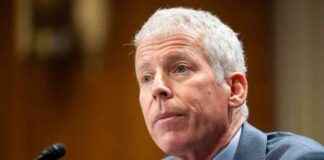The 16th United Nations Biodiversity Conference of the Parties (COP16) held in Colombia last year shed light on a pressing issue: global efforts to combat biodiversity loss are falling short. The outcomes of the conference were marked by vague targets and limited accountability, highlighting a critical challenge for the world. However, amidst this challenge lies an opportunity for businesses to play a crucial role in addressing the urgent financial gaps necessary to protect nature.
Steve Edwards, head of biodiversity at South Pole, emphasizes the importance of the upcoming COP16 intersessional meeting in February, which he fondly refers to as COP16 2.0. This meeting offers a chance to reevaluate the financial needs for nature protection and equip businesses with the tools needed to support biodiversity markets and drive meaningful action.
Supporting Early Movers
At COP16, there was a noticeable increase in the presence of private-sector participants who are becoming more aware of the need to address the loss of nature. These early movers, businesses that go beyond regulatory requirements to lead in sustainability efforts, have the potential to influence global markets significantly. Industries with agriculture-based value chains such as food, packaging, and mining are actively conducting risk assessments and preparing for the future. However, sectors like fast fashion and technology need to follow suit due to their substantial environmental impact and potential for driving change. By adopting new frameworks, finance mechanisms like biodiversity credits, and influencing policies, these early movers are setting essential precedents for scalable solutions.
Public-Private Working Group
To bridge the gap between ambition and action, Edwards suggests the need for a dedicated accelerator working group that brings together governments, companies, and project developers. This collaborative effort aims to align regulatory ambitions with market needs, ensuring a steady pipeline of viable nature projects. The ongoing collaboration among stakeholders is deemed essential to drive meaningful progress and create sustainable solutions.
De-risking Strategy for Businesses
Halting biodiversity loss requires significant financial investments, with an annual funding gap of up to $500 billion. While governments play a crucial role, the private sector’s contribution is vital, with the potential to grow to $200-$300 billion annually by 2030. Investing in nature is not only a moral imperative but also a strategic move to mitigate financial risks and enhance resilience. Companies that align with science-based targets and disclosure requirements not only reduce their environmental impact but also increase their appeal to regulators, investors, and customers.
As COP16 2.0 approaches, the world’s governments have an opportunity to shift from rhetoric to action. By empowering early movers, establishing frameworks for biodiversity credits, and fostering market readiness, decisive steps can be taken towards protecting nature and securing a sustainable future for generations to come.














